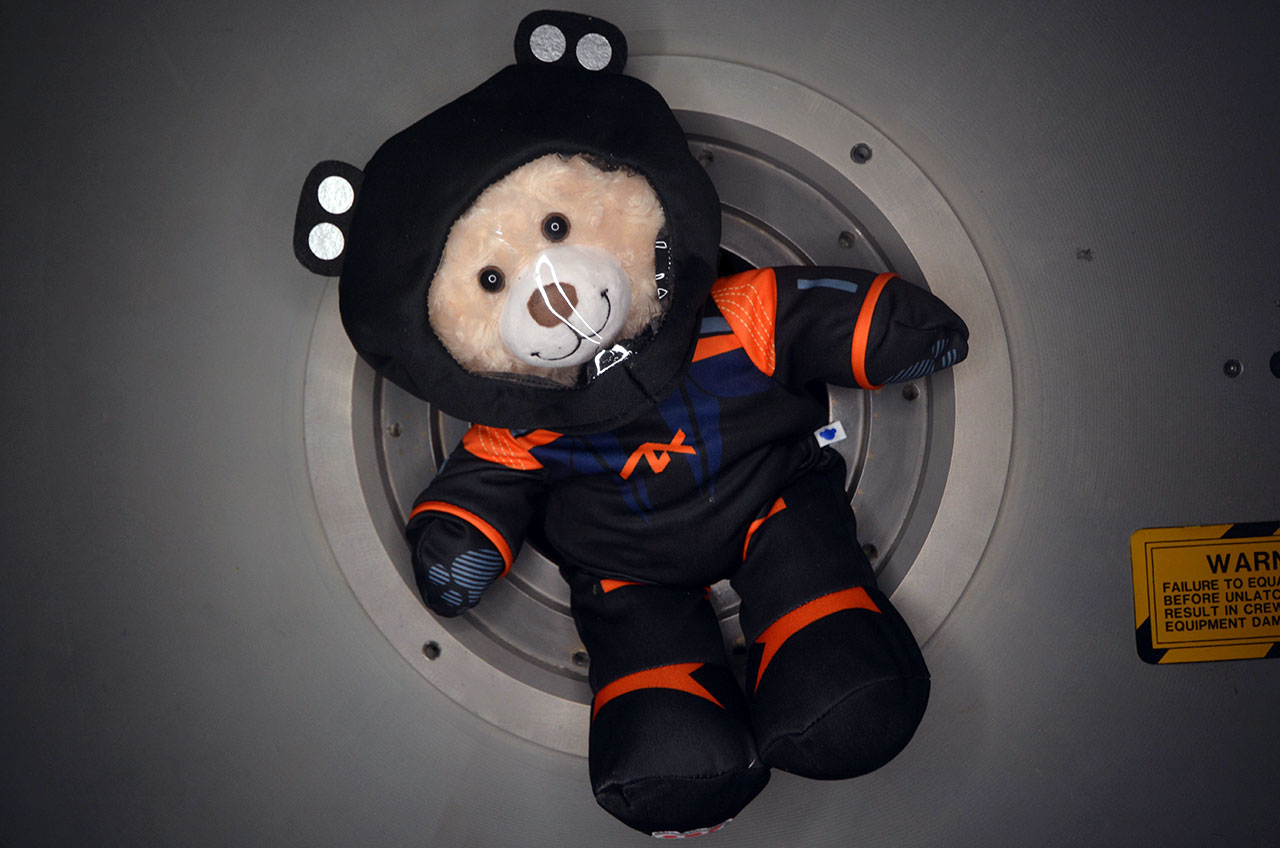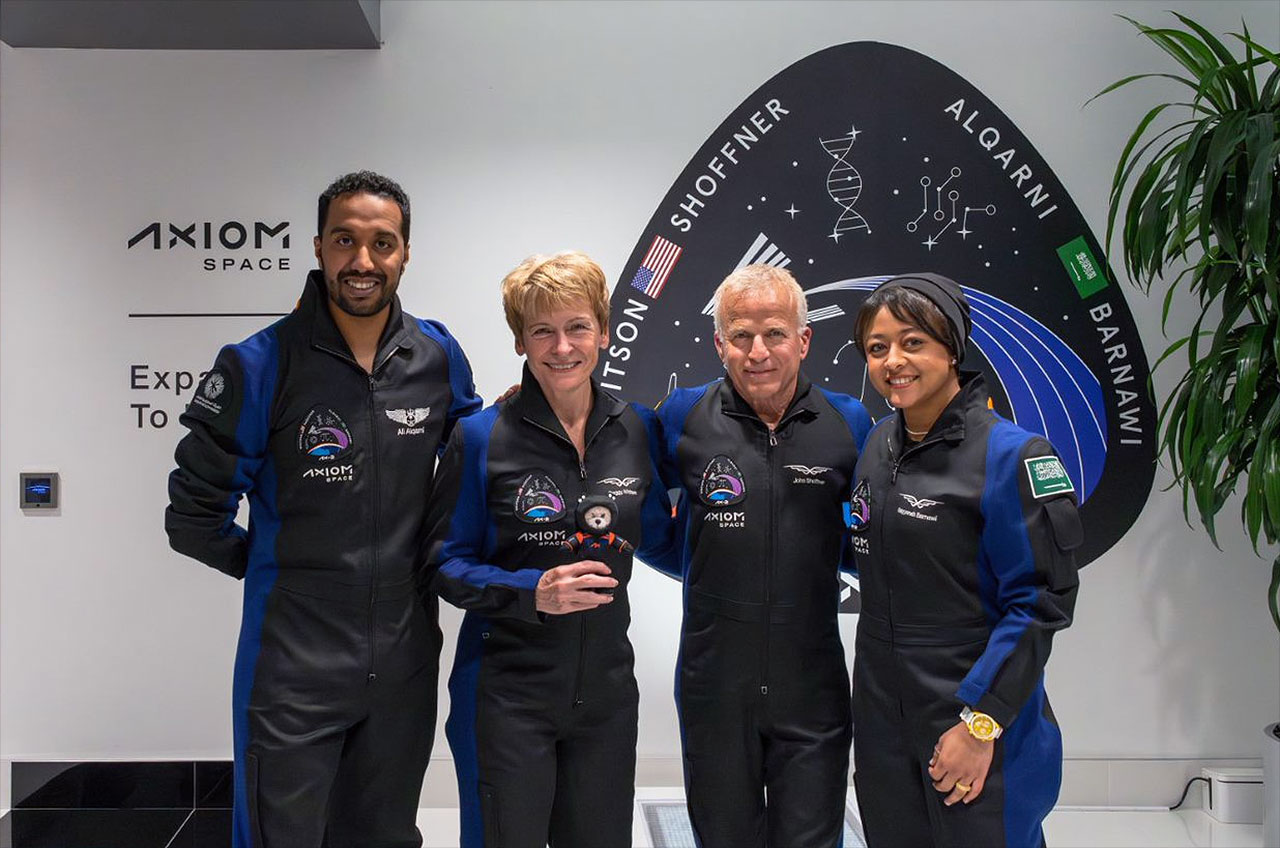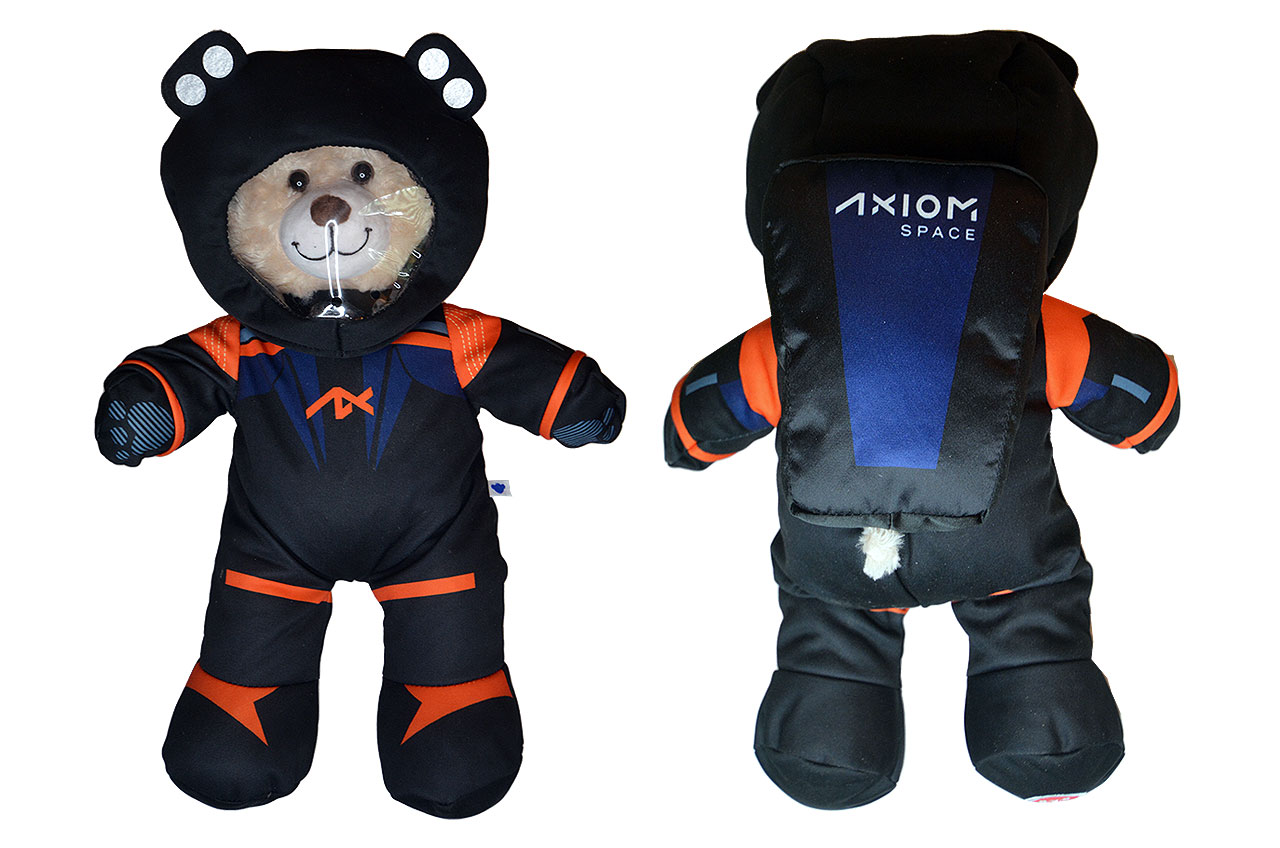Build-A-Bear creates fluffy 'zero-g indicator' for Axiom Space Ax-2 crew
You can order your own Axiom Space Bear from Build-A-Bear or Axiom Space now.

The zero-g indicator flying on the second private mission to the International Space Station may be the first that needed assembly.
The product of a partnership between the custom stuffed animal retailer Build-A-Bear Workshop and Axiom Space, the space services company that organized the launch, the Axiom-2 (Ax-2) zero-g indicator is the first Build-A-Bear doll to fly into space. Named "GiGi," the fluffy toy is dressed in a miniature version of Axiom's AxEMU spacesuit, which will be worn by the next American astronauts to walk on the moon.
"Guests dream big at Build-A-Bear, and the opportunity to partner with Axiom Space as part of the Ax-2 mission and send GiGi, the furry fifth crew member, to space is a special honor that we hope inspires youth across the globe to reach for the stars, pursue adventures and follow their passion," said Sharon Price John, president and CEO at Build-A-Bear, in a statement. "With Build-A-Bear's 25-year history of creating special moments, our GiGi, wearing the next-generation spacesuit, has the wonderful opportunity to be part of history as the Ax-2 crew's zero-gravity indicator."
Related: Live updates from the Ax-2 private astronaut mission
Ax-2 commander Peggy Whitson, pilot John Shoffner, and mission specialists Ali AlQarni and Rayyanah Barnawi will watch for GiGi to begin floating inside their SpaceX Dragon spacecraft to indicate when they have entered the microgravity (or "zero-g") environment of space after a nine-minute climb into Earth orbit. A tradition that began in the former Soviet Union with the first launch of a human into space in 1961, zero-g indicators have since been adopted by the crews flying on SpaceX and other U.S. vehicles.
Previous dolls have included "Suhail," the symbol of the United Arab Emirates (UAE) astronaut program, which is now on the space station with the members of SpaceX's Crew-6 mission, and Caramel, the mascot of the Montreal Children's Hospital Foundation, which was flown by the Ax-1 crew in 2022.

The Ax-2 crew hopes students from around the world will look up at GiGi and be inspired to learn more about space exploration and consider careers in science, technology, engineering, the arts and mathematics (STEAM).
"GiGi was designed and built for the next generation of space explorers," said Sandra Nelson, vice president of marketing at Axiom Space, "who will enable us to explore beyond, build a sustainable future in low-Earth orbit and realize the extensive science research that will be achievable with their involvement and active participation in STEAM."
Young children and enthusiasts can follow GiGi's journey on her blog, which was designed to help kids see themselves through her "un-bear-lievable" experience.
"As a young cub, I was always drawn to math and science projects. After the gift of a telescope one summer, I felt connected to the stars in a way I never had before, and I knew STEAM studies were for me," GiGi's blog reads. "Now as a full-time astronomer and aspiring astronaut, I am over the moon to be part of the Ax-2 mission."
"After all, it takes a lot of heart and courage to be a space explorer, and I am ready for it," says GiGi.
Although GiGi will not be traveling to the lunar surface (at least, not yet), she will spend about a week in orbit with her Ax-2 crewmates as they conduct science and educational outreach from aboard the International Space Station.

To celebrate GiGi's mission, Build-A-Bear is now offering for sale the "Axiom Space Bear," a 16-inch-tall (40 centimeters) version of the 6.75-inch (17 cm) Ax-2 zero-g indicator, sporting the same style spacesuit cover layer as designed for Axiom Space by Esther Marquis, costume designer on the Apple TV+ alternate space history series "For All Mankind."
The Axiom Space Bear is available for order now from the Build-A-Bear Workshop and Axiom Space websites for $42 each.
"Axiom Space is excited to partner with the iconic brand Build-A-Bear to encourage children of all ages to learn about space exploration and our efforts to expand access to microgravity for individuals, countries and institutions to conduct meaningful scientific research," said Nelson.
Follow collectSPACE.com on Facebook and on Twitter at @collectSPACE. Copyright 2023 collectSPACE.com. All rights reserved.
Breaking space news, the latest updates on rocket launches, skywatching events and more!

Robert Pearlman is a space historian, journalist and the founder and editor of collectSPACE.com, a daily news publication and community devoted to space history with a particular focus on how and where space exploration intersects with pop culture. Pearlman is also a contributing writer for Space.com and co-author of "Space Stations: The Art, Science, and Reality of Working in Space” published by Smithsonian Books in 2018.
In 2009, he was inducted into the U.S. Space Camp Hall of Fame in Huntsville, Alabama. In 2021, he was honored by the American Astronautical Society with the Ordway Award for Sustained Excellence in Spaceflight History. In 2023, the National Space Club Florida Committee recognized Pearlman with the Kolcum News and Communications Award for excellence in telling the space story along the Space Coast and throughout the world.

